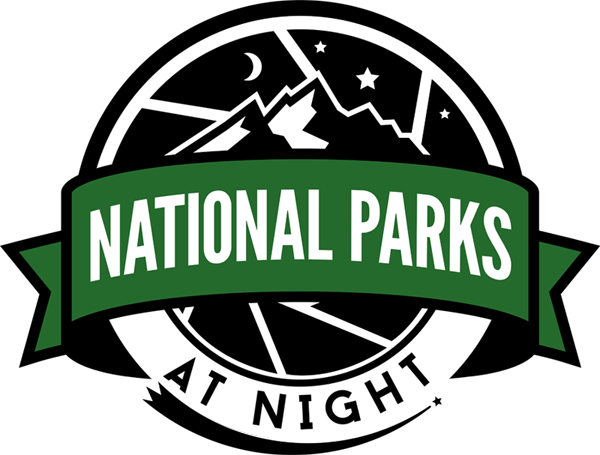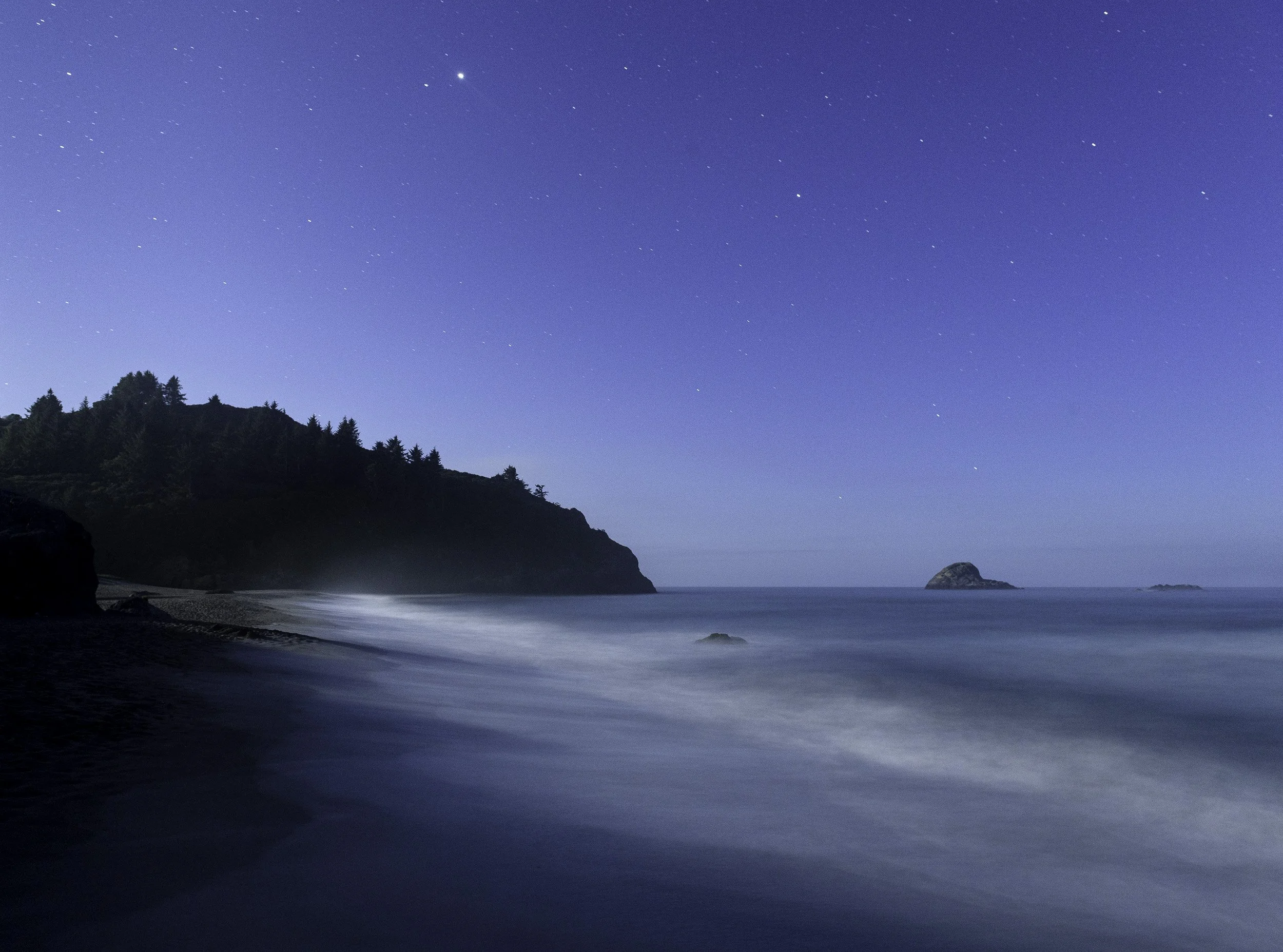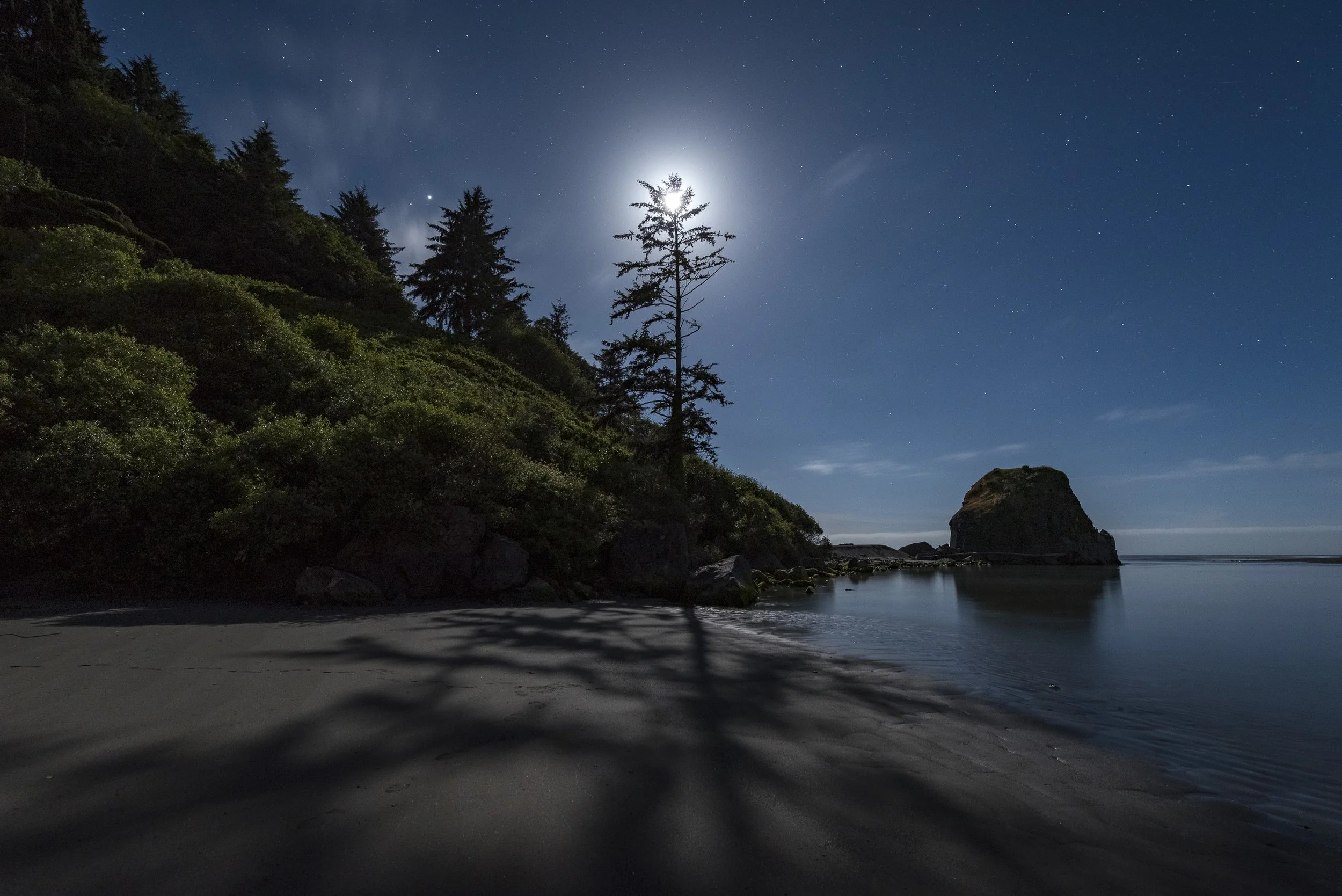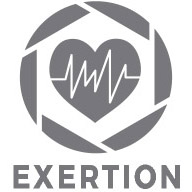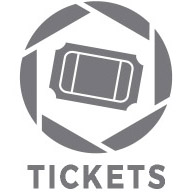Redwood National Park
Redwood National and State Parks is composed of three distinct environments: a rocky coastline with steep cliffs and the ubiquitous coastal fog, upland prairies, and of course the magnificent redwood forests that give the park its name. During this workshop, you’ll have the opportunity to develop your night photography skills in all three.
Workshop Details
May 31-June 6, 2026 — Sold Out, Join Waitlist Below
This is a 6-night, 6-day workshop. Your adventure begins with a welcome dinner on May 31, and ends after a final slideshow on the afternoon of June 6.
$2,595 + applicable taxes.
Skill level
Open to all who have an understanding of the basic principles of photography and of their cameras.
Group size
14, with 2 instructors — 7:1 ratio
NPS website
Redwood National & State Parks
Workshop Leaders
Registration
Hoping to get a spot? Sign up below for our no-fee waitlist.
| • Deposit of $800 is required to reserve your spot. |
| • Balance of $1,795 is due on March 3, 2026. → Pay balance here. |
| • You may choose the “Pay in Full” ticket if you desire to pay all at once. |
| • Last day for a cancellation request is March 2, 2026. (see cancellation and refund policy) |
| • The workshop fee does not include lodging, food, airfare, entrance fees, or transportation to or during the workshop. |
The Redwood Experience
The full moon coincides with our arrival at the Requa Inn on May 31. We’ll have plenty of moonlight at the beginning of the workshop, and a couple of hours to photograph the Milky Way before the moon rises on the last couple of nights. We will likely experience foggy conditions.
Despite the month of June being the high season for Milky Way photography, we have chosen the full moon week for the workshop to ensure the best photographic conditions for the potentially foggy environment, and to experience the magical quality of moonlight on the landscape. We will be teaching participants in this workshop to embrace whatever light is available—starlight, moonlight, flashlights or fog lights!
Forests are a challenging subject for night photography, mostly because whatever light there may be has a hard time penetrating the high canopy and reaching the forest floor. During the workshop, we’ll teach various strategies for working in those conditions. We’ll also spend time exploring and photographing the forests during daytime, and we’ll spend several nights photographing along the Klamath River and the rocky Pacific coastline.
What You Should Know
Participants must have at least basic photo skills, know their cameras well, be comfortable shooting raw in manual mode, and have the ability to do at least rudimentary post processing on your images. Photoshop skills will be helpful, but are not necessary.
If you would like to join us on this trip but are unsure whether you have adequate night photography skills, we can offer pre-event tutoring to get you ready for your adventure with us. Additionally, a few of us have written books that may be productive pre-trip reads.
What You Will Learn
Because of the wildly divergent landscapes in this park, we’ll have opportunities to explore different techniques and tools.
We’ll work in a coastal situation where awareness of the tides is critical, and we’ll use the rocks and driftwood on the beaches for foreground subjects with the sea stacks, ocean and sky for our background. We’ll photograph the higher elevation and open landscapes of the prairies. Most of all, we’ll photograph in the redwood forest, where only a little moonlight reaches the forest floor. The forest presents opportunities for light painting on a very large scale!
TOPICS COVERED WILL INCLUDE:
scouting and planning
composing and focusing in low light
optimizing exposure for raw capture and development with Lightroom
light painting on both a large and small scale
and more …
Night Conditions
Logistics & General Info
Travel
The home base of the workshop will be in Klamath, California. You are responsible for arranging and paying for your own transportation.
Nearby Airports:
Arcata (ACV) –– 1 hour from Klamath
Medford (MFR) — 2.5 hours
Portland (PDX) — 6.5 hours
Sacramento (SMF) — 6.5 hours
Oakland (OAK) — 6.5 hours
Rental Car
You will need a rental car to get to the workshop and to the shoot locations.
There is no need for four-wheel-drive.
If you are interested in carpooling or sharing a rental car, let us know and we will try to connect you with another attendee looking for the same.
Lodging & Food
You are responsible for arranging and paying for your own meals and accommodations.
Lodging
Our base will be the wonderful Requa Inn, a small historic hotel in Klamath, at the mouth of the Klamath River, home to the indigenous Yurok tribe. We’ll have it exclusively to ourselves during the workshop. Each room is different and priced according to size and view. You will be able to select your room on a first-come, first-served basis after registering.
You are not required to stay at the official workshop lodging, though doing so does make it easier to meet with the group each day.
Food
A welcome dinner at the inn on May 31 is included, as is brunch on the last day before the final slide show.
Klamath has a few local food options, and a 30-minute drive to Crescent City will avail even more.
We encourage eating two meals per day—a good breakfast and a great late lunch.
When on the night shoots, you may wish to bring snack food or a sandwich and plenty of water.
Weather
Expect daytime highs from 55 to 80 F, and nighttime lows in the 50s. The fog can make it feel colder, and it is often windy along the coast.
Recommended Attire
Shorts or pants and short-sleeve shirts for daytime, pants and long-sleeve shirts for night.
A sweatshirt and medium-weight jacket will likely be useful, and a base layer might not be a waste of packing space. Layers are good.
Comfortable and protective shoes are recommended for getting around. There won’t be long hikes, but we will be on trails, so quality trail shoes or hiking boots would be optimal.
Exertion Level
The exertion level of this workshop is Easy. (See more about our classifications.)
No vigorous activity will be required during the workshop, but please consider your physical abilities prior to registering. There won’t be any long hikes, but we will be doing short hikes on unmaintained trails, and you should be comfortable carrying your own equipment over uneven ground in the dark.
Considerations
IMPORTANT: We encourage reading our FAQs page for more information about skill and gear requirements, and other information that pertains to all our workshops.
If you have questions, please contact us—we're happy to talk it over with you.
The Ultimate Forest Bathing …
“There is really no way to explain the feeling of standing beneath these giants, whether for the first time or the hundredth.”
As a former resident of San Francisco, I’ve passed many an afternoon walking the trails of Muir Woods National Monument in Marin County. Muir Woods is all about the trees. Tall trees. Very tall trees. Whenever I needed a break from the noise and commotion of the city, I’d go for a ride on my motorcycle across the Golden Gate Bridge and inevitably end up at Muir Woods. To me, a walk in the forest or a swim in the ocean is the best way to de-stress.
Recently, the Japanese phenomenon known as “forest bathing” has gained popularity in the U.S., and for good reason. People who take regular walks in a forest have demonstrated measurable changes in immune markers and stress hormones, part of which may be attributed to breathing in phytoncides—antimicrobial volatile organic compounds derived from trees. It seems that spending time in the forest doesn’t just feel good, it is good for you.
Whatever the reason for it, spending time among redwoods is truly a humbling experience. There is really no way to explain the feeling of standing beneath these giants, whether for the first time or the hundredth. It is a privilege to be with them, and a worthy challenge to do them photographic justice.
The coast redwoods (Sequoia sempervirens) are the tallest trees on earth, and are among the oldest living things. They can live as long as 2,000 years. The tallest living tree is 379 feet, and the widest nearly 30 feet in diameter, but there are stories of trees that rose to heights of over 400 feet before logging began in the mid 19th century and reduced their territory from over 2.1 million acres to just 120,000 acres of old growth forest today.
In the 10 years I lived in California, I visited Sequoia and Kings Canyon national parks, which are home to the giant sequoias, a stouter but slightly shorter redwood tree. I spent time with coast redwoods in Marin, Santa Cruz, Monterey and Mendocino counties, but never quite made it to Redwood National and State Parks. I knew that I had to go, so it was with great eagerness that I signed up to lead a workshop there in 2018. Now I'm excited to revisit those magnificent trees again. The park doesn’t disappoint.
